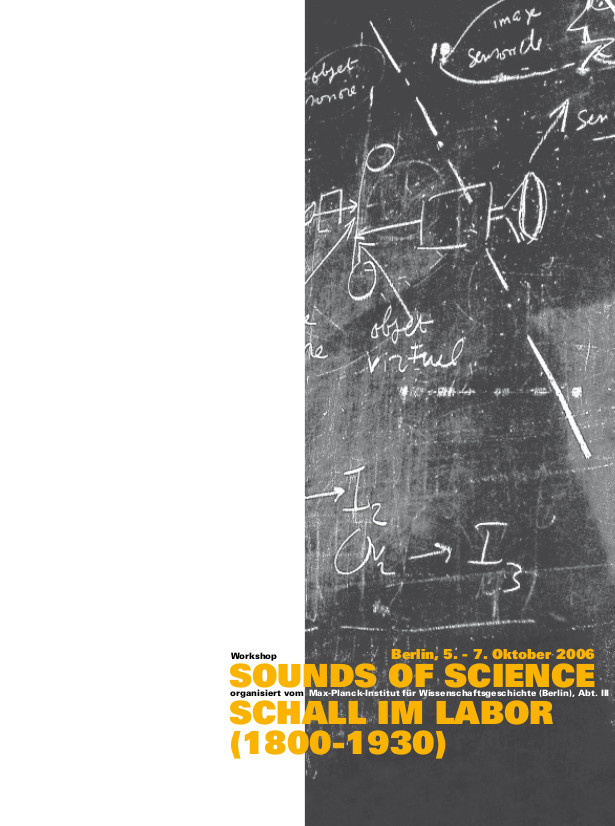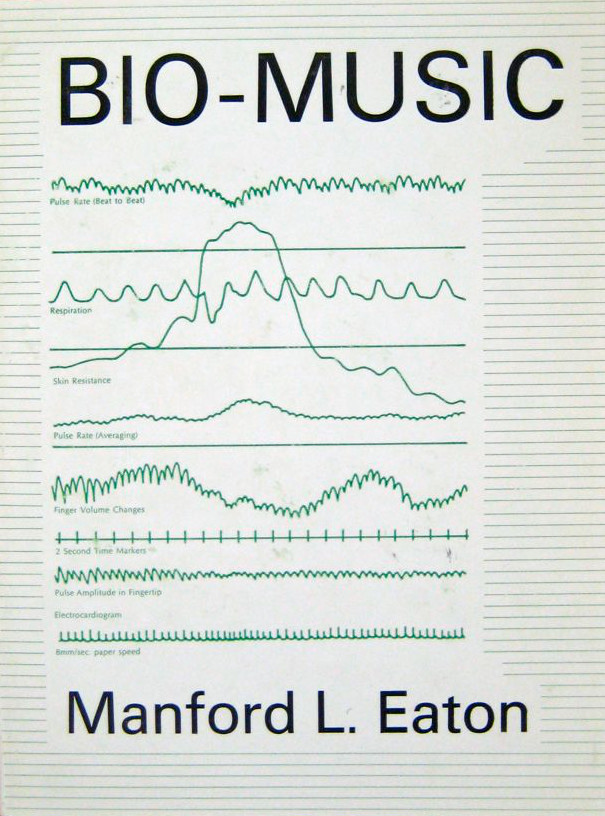Julia Kursell (ed.): Sounds of Science – Schall im Labor, 1800–1930 (2008) [English, German]
Filed under proceedings | Tags: · acoustics, aesthetics, history of science, music, radio, science, sound

The following collection of papers documents the workshop Sounds of Science – Schall im Labor, 1800 to 1930, carried out at the Max Planck Institute for the History of Science, Berlin, in October 2006.
The workshop asked about the role sound plays in the configurations among science, technology and the arts, focusing on the years between 1800 and 1930. The chronological point of departure was the appearance of a registration technique: in 1802 Ernst Florens Friedrich Chladni published his book on acoustics where he extensively described the Klangfiguren – his visualizations of the movements of a vibrating, sounding body. This time span was also characterized by the systematization of research into hearing, which Hermann von Helmholtz greatly promoted through his book On the Sensations of Tone as a Physiological Basis for the Theory of Music, which first appeared in 1863. Helmholtz’s resonance theory of hearing described in this book was not replaced by a new explanation for the process of hearing until the end of the 1920s, which gives another temporal delineation for the workshop. Furthermore, between 1800 and 1930 a wealth of technical innovation in the realm of acoustical media occurred: in addition to a series of visualization techniques for sound, the phonograph and gramophone, microphone and loudspeaker, telephone and radio were invented. As well, the music of European tonal composition underwent a radical change during this time that led to a collapse of the tonal system and provoked the demand for music composed of sounds and noises, rather than tones.
Conference participants were invited to discuss the role of sounds in the laboratory from different angles, in three parts. The “Materiality of Sound” was oriented towards research into material cultures and cultural techniques in experimentation. “Registration, Transmission, Transformation” put questions of medial historiography into the foreground, while “Experimental Aesthetics” thematized aesthetic implications.
With papers by Bernhard Siegert, Peter Szendy, Julia Kursell, Florian Hoelscher, Florian Dombois, Henning Schmidgen, Jonathan Sterne, Wolfgang Hagen, Douglas Kahn, Daniel Gethmann, Elena Ungeheuer, and Myles W. Jackson.
Publisher Max-Planck Institute for the History of Science, Berlin, 2008
MPG Preprint 346
Open Access
134 pages
PDF (15 MB)
Comment (0)Barry Truax: Acoustic Communication (1984)
Filed under book | Tags: · acoustics, electroacoustic music, listening, music, noise, psychoacoustics, sound, technology

This book draws upon many traditional disciplines that deal with specific aspects of sound, and presents material within an interdisciplinary framework. It establishes a model for understanding all acoustic and aural experiences both in their traditional forms and as they have been radically altered in the 20th century, Digital technology has completely redefined the listening and consumption patterns of sound.
Publisher Ablex Publishing, Norwood/NJ
ISBN 0893912638, 9780893912635
244 pages
Manford L. Eaton: Bio-Music (1974)
Filed under book | Tags: · biophysics, body, music, sound

“Bio-Music is the term used by ORCUS Research to describe a class of electronic systems that use biological potentials in feedback loops to induce powerful, predictable, repeatable, physiological/psychological states which can be elegantly controlled in real time. The types of states that can be programmed are as powerful as chemical (drug) states, and the hallucinogenic powers of electronic sensory feedback systems can be controlled and guided with a precision utterly impossible with chemical methods. [..] It is the purpose of this book to provide some guidelines for researchers in this fascinating field and to attempt to prevue the types of systems that are now or soon will be within the state of the electronic art. We hope that this book will be read by those within the arts who hold as their thesis that only through the development of arts as powerful as the technology around us will we ever be able to regain any of the peace and understanding that was ours in a more pristine world.” (from the Preface)
Publisher Something Else Press, Barton/VT, 1974
ISBN 0871101246, 9780871101242
65 pages
Commentary: Branden W. Joseph (Grey Room, 2011).
PDF
See also Eaton’s article Induce and Control: Bio-Music Is Here Today (Music Educators Journal, 1973).

